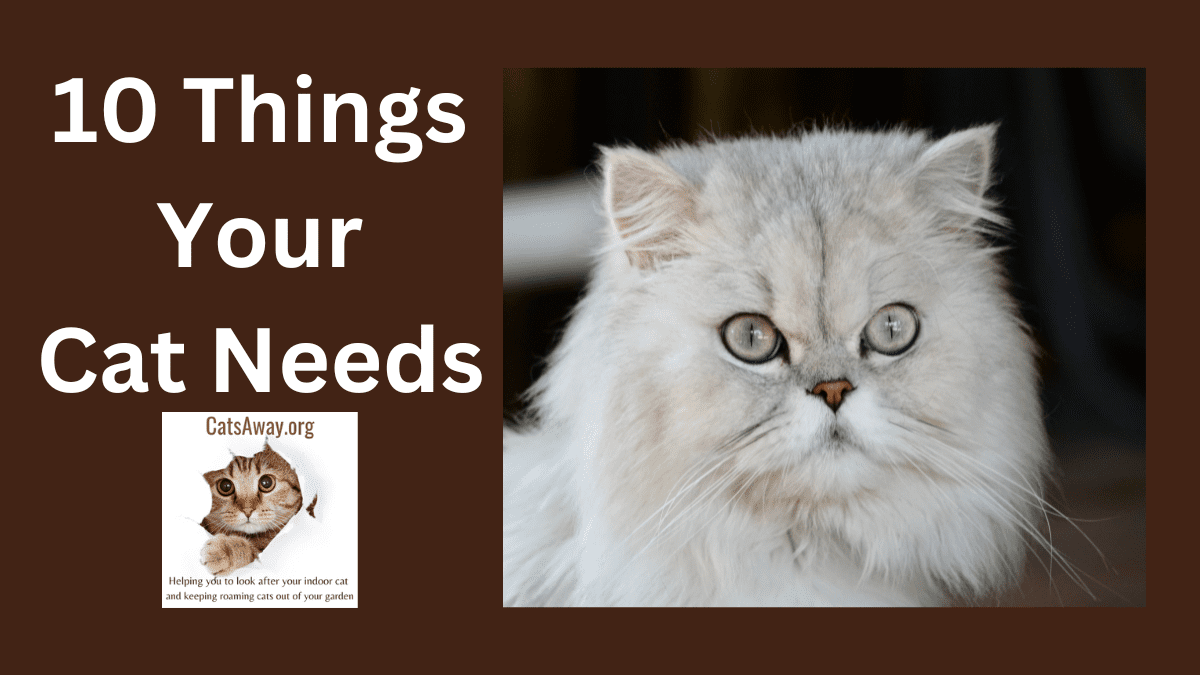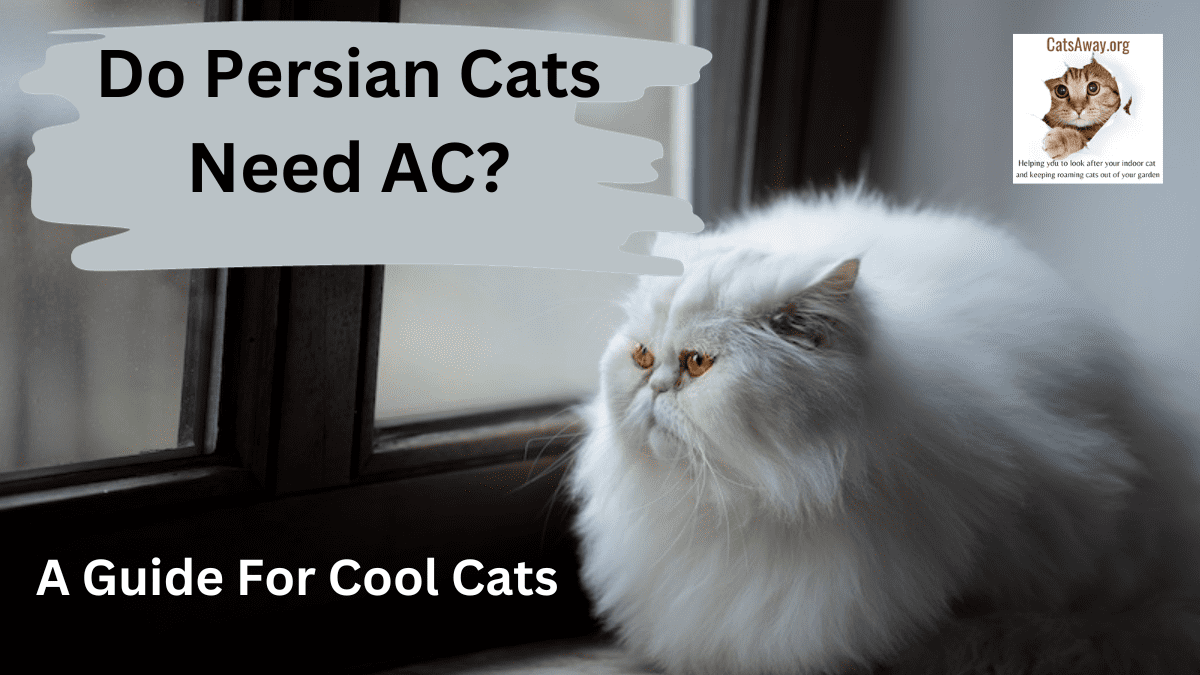Having a pet can be incredibly rewarding, but if you’re an indoor cat owner then there are some extra considerations when it comes to making sure your home is safe for them. Houseplants are often part of the décor in any house, however not all house plants are safe for cats.
To help ensure that both you and your furry friend get to enjoy the beauty of nature indoors I have put together this list of my favorite houseplants safe for cats with pictures to help with identification.
From Chinese Money Plant and African Violet through to Zebra Plant, Wax Plant and Moth Orchids; each plant on my list includes care tips.
Chinese Money Plant
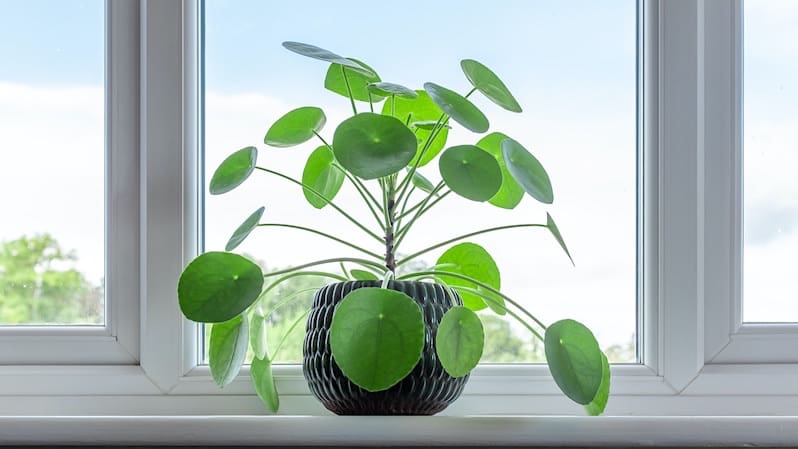
Description
Also known as the missionary plant or pancake plant, is a popular houseplant that is safe for cats and easy to care for. It has round, glossy leaves with a unique pattern of spots and stripes.
This low-maintenance houseplant can be grown in bright indirect light or even lower light conditions. It prefers soil that is slightly moist but not soggy and should be watered when the top inch of soil feels dry to the touch.
Care Tips
To keep your Chinese money plant healthy, make sure it’s getting enough sunlight without being exposed to direct sun which can burn its leaves. Water regularly so that the top inch of soil remains moist but not soggy – too much water will cause root rot.
Prune any dead or yellowing leaves from time to time to encourage new growth and help maintain its shape. Fertilize once every two weeks during spring and summer months with an all-purpose liquid fertilizer diluted by half according to package instructions.
This plant is an easy-to-care-for houseplant that’s safe for cats and can add a touch of greenery to any indoor space.
African Violet Plant

Description
African violets are beautiful flowering plants that come in a variety of colors including pink, purple, white, and blue. These plants have fuzzy, velvety leaves and require bright indirect light to thrive. They prefer temperatures between 65-75°F (18-24°C) and regular watering with lukewarm water.
To ensure your plant is getting enough water, feel the soil before you water it; if it’s still damp from the last time you watered it then wait until the soil has dried out before adding more moisture.
Care Tips
When caring for an African violet there are several things to keep in mind. Make sure to provide plenty of bright indirect light but avoid direct sunlight as this can burn the leaves or cause them to fade in color over time.
Keep the temperature consistent by avoiding drafts or extreme changes in temperature as these can shock your plant and cause leaf loss or wilting flowers. Water regularly using lukewarm water so that the top inch of soil remains moist at all times but not soggy; if your plant is sitting in too much water this can lead to root rot which will kill your plant quickly.
Finally, be sure to feed every two weeks during its growing season with a balanced fertilizer such as 10-10-10 diluted half strength for best results.
African Violets are a great choice for pet owners, as they are non-toxic to cats. They can bring life and color to any indoor space with their vibrant blooms.
Recap: African violets are beautiful flowering plants that require bright indirect light, regular watering with lukewarm water, and balanced fertilizer to thrive. Care tips include avoiding direct sunlight, keeping temperatures consistent, and ensuring the soil is not soggy.
Zebra Plant
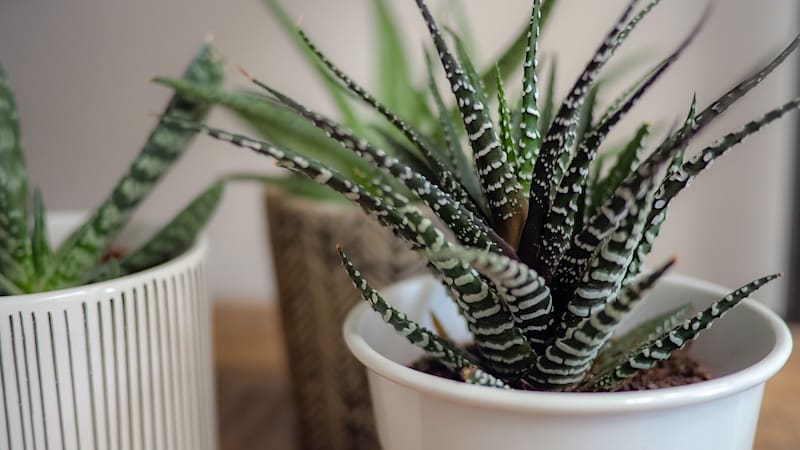
Description
This is an attractive houseplant with long, narrow leaves that have white stripes running along them like zebra stripes. It’s a great choice for cat owners as it is safe for cats and easy to care for.
This plant requires bright, indirect light and regular watering in order to thrive. It can be grown in containers or hanging baskets and will add a unique touch of beauty to any home or office setting.
Care Tips
When caring for this plant, it’s important to provide bright but indirect sunlight. Too much direct sun can cause the leaves to burn, so make sure you place your plant away from windows where there may be too much direct light coming through.
Water regularly when the soil feels dry; if you notice brown spots on the leaves this could mean you are over-watering your plant so reduce how often you water it slightly until they disappear.
Feed your zebra plants once every two weeks during spring and summer months with a balanced liquid fertilizer diluted by half its strength than what is recommended on the label instructions
This is a great houseplant for indoor cat owners due to its non-toxic nature and interesting appearance.
Wax Plant (Hoya carnosa)

Description
Also known as the Hindu Rope plant is an attractive houseplant with thick waxy leaves that feature red or pink veins running through them. It has a unique pattern of veins on the leaves, which look like marble patterns on stone walls or floors. This plant requires bright, indirect light and regular watering but can tolerate low light conditions too.
Care Tips
When caring for wax plants, it’s important to provide enough water so that the soil stays moist but not soggy. Make sure to avoid overwatering as this can cause root rot and other issues.
Additionally, make sure to fertilize every two weeks during its growing season with a balanced fertilizer solution diluted in half strength. Lastly, keep it away from drafts and direct sunlight as this can damage the delicate foliage.
This is a great houseplant for cat owners, as it’s safe and easy to care for. Its lush foliage and fragrant blooms make it an attractive addition to any home.
Phalaenopsis orchids

Description
Phalaenopsis orchids, also known as Moth orchids, are one of the most popular and easy to care for houseplants. They have beautiful blooms that come in a variety of colors and sizes. Phalaenopsis orchids thrive best when kept indoors in bright indirect light. They prefer temperatures between 65-80°F (18-27°C) with high humidity levels around 50%.
Phalaenopsis orchids have long arching stems with glossy green leaves and delicate white flowers that bloom from spring through fall. The flowers can last up to two months if cared for properly. The plant is native to tropical regions such as Southeast Asia, Australia, New Guinea, India, and China where it grows on trees in shady areas near rivers and streams.
Care Tips
When caring for these orchids, you should water them once every 7-10 days depending on the temperature and humidity level of your home environment. They like moist but not soggy soil, so be sure not to overwater them.
Fertilize monthly during their growing season using an all-purpose fertilizer diluted by half according to package instructions; this will help keep your plant healthy and promote more blooms. If you notice any yellowing leaves, then trim them off at the base so new growth can take its place; this will also help keep your plant looking neat and tidy.
Aloe Vera
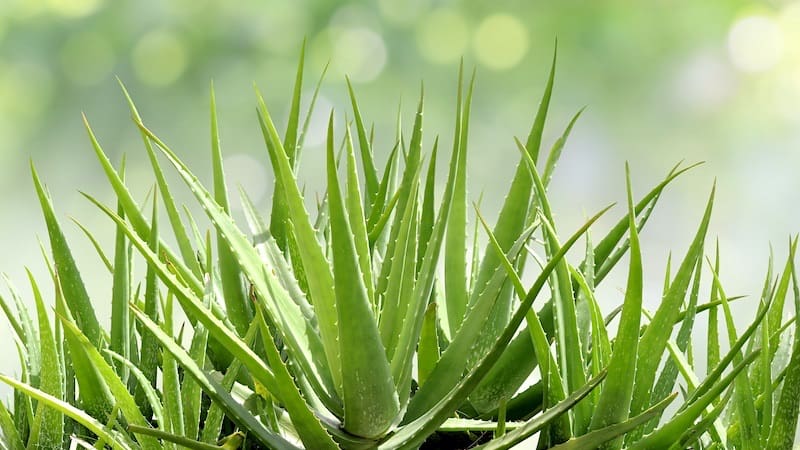
Description
Aloe vera is an evergreen perennial succulent plant in the family Asphodelaceae. It is native to northern Africa and grows best in warm, dry climates.
The plant has thick deep green spiky leaves arranged in a rosette formation around a central stem, with yellow-tipped flowers appearing at the top of each stem. They are easy to care for and require minimal attention when planted indoors.
Care Tips
When caring for them, it’s important to provide them with plenty of sunlight and water regularly during the growing season from spring through autumn. Place your house plant in direct sunlight near a window or outdoors on a patio if possible – but be careful not to overexpose it to intense heat or cold temperatures as this can cause stress.
Venus Fly Trap
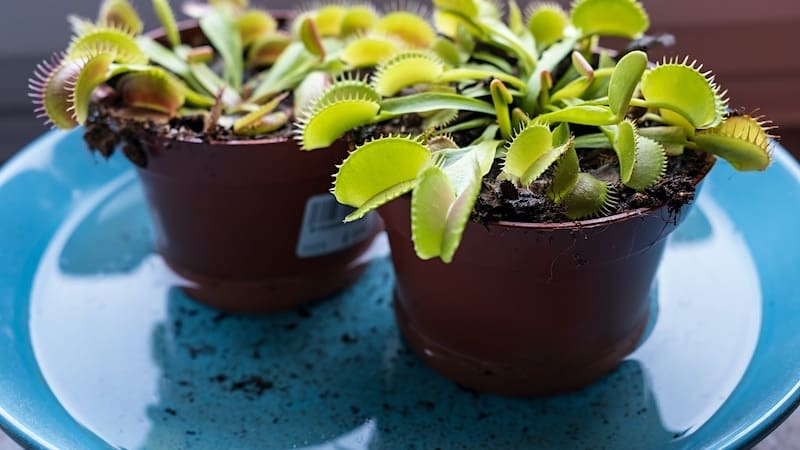
Description
The Venus fly trap is an iconic carnivorous plant native to North and South Carolina in the United States. Its scientific name is Dionaea Muscipula, and it belongs to the Droseraceae family of plants.
The plant has a unique form; its leaves act like jaws that snap shut when triggered by an insect landing on them.
The Venus fly trap is a low-growing perennial herb with bright green pointed leaves radiating out from a central stem. It produces small white flowers during the summer months and can grow up to 7 inches in diameter.
Care Tips
To ensure optimal health of your Fly Trap you should keep it in bright light, provide clean water, and feed it insects or meaty foods such as shrimp or beef liver every few weeks.
Cast Iron Plant
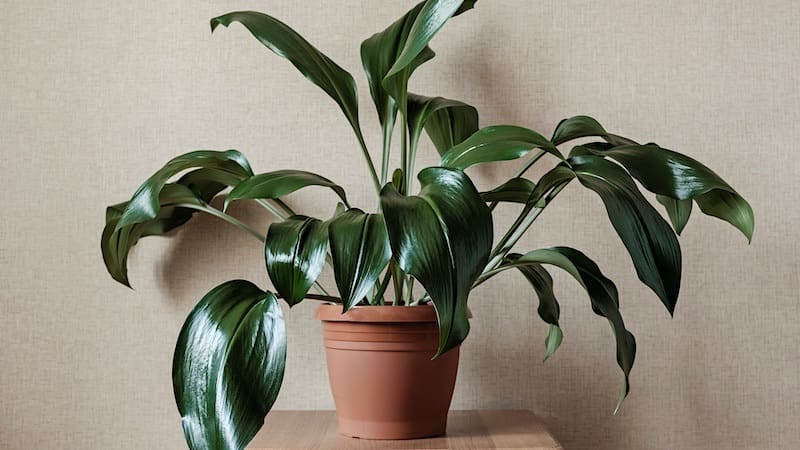
Description
The Cast Iron Plant (Aspidistra elatior) is a foliage plant that adds an exotic, yet calming look to any home or office.
It’s an easy-care evergreen perennial with large glossy leaves and underground stems with impressive durability. With its name derived from its ability to withstand neglect, the Cast Iron Plant is an excellent choice for those looking for low maintenance indoor plants.
Care Tips
This hardy houseplant can tolerate low light levels and will grow in dark areas of the home which makes it perfect for shady hallways and corners. The Cast Iron Plant prefers constantly moist soil, but can easily adapt to dry conditions if allowed to dry out partially between watering sessions.
While this versatile houseplant can handle some direct sunlight, it should be kept away from the hottest spots as too much sun may cause leaf damage or scorching.
Prayer Plant
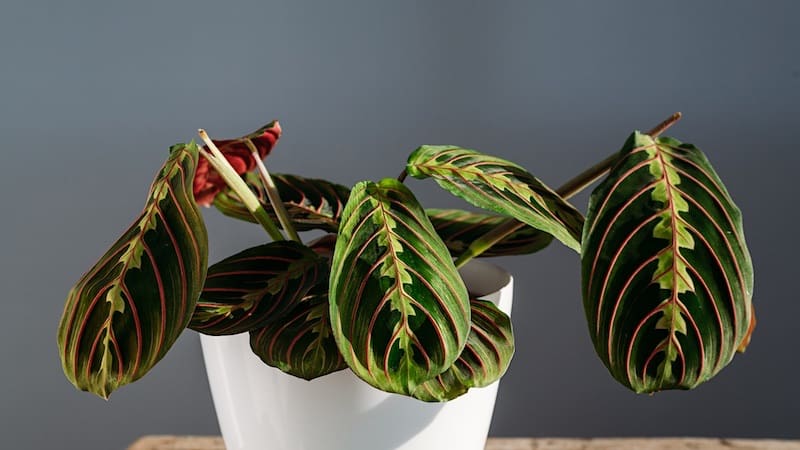
Description
The Prayer Plant family (Maranta leuconeura) are my favorite of all these non toxic plants. It is a beautiful and popular plant and thankfully is safe for cats.
It has strikingly bright green oval-shaped leaves with feathery veins in purple or red that give the plant a unique look. This foliage can reach up to 8 inches in height and 12 inches in width, adding texture and beauty to any living space.
Care Tips
Prayer Plants are low maintenance plants that thrive best when they are kept moist but not soggy. They prefer indirect sunlight, so place them near an east-facing window or use artificial grow lights for optimal growth.
Make sure to water your Prayer Plant deeply once a week during the summer months, allowing the soil to dry out between watering sessions. During winter, reduce watering frequency and make sure the soil does not become overly wet as it can lead to root rot.
Friendship Plant

Description
Also known as a Chinese evergreen, is a beautiful houseplant with broad green and silver leaves. It requires minimal care and is an ideal option for beginner gardeners or those without much experience caring for plants.
The Chinese Evergreen adds a pleasing aesthetic to any room and is especially tolerant of dry air and low light conditions, making it an excellent choice for offices or apartments.
Care Tips
In terms of care tips, the plant should be placed in indirect sunlight but can tolerate some shade as well. When watering the friendship plant make sure to thoroughly moisten its soil but not to overwater it; if the leaves start to yellow or become soggy this may be a sign that you are giving your friend too much water! To keep your plant healthy fertilize monthly during spring and summer only.
FAQ
What house plant is safe for cats?
Cat-safe house plants include spider plants, cornstalk dracaena, pothos, peace lilies, and bamboo palm. These are all non-toxic to cats and can provide a safe environment for them to explore without any risk of poisoning.
Some herbs such as catnip and mint may be grown in pots indoors as long as they are kept away from areas where cats may eat them directly. When selecting any plant for your home with cats present it is important to double check that the species you have chosen is not toxic before bringing it into your home.
What can I use instead of pothos for cats?
There are several houseplants safe for cats that can be used as an alternative to pothos (Devil’s Ivy). Spider plants (Chlorophytum comosum) are a great option, as they have non-toxic leaves and long stems that cats find difficult to chew on.
Cat grass (Dactylis glomerata) is also a good choice, as it’s safe for cats to eat and helps keep their digestive system healthy. Additionally, lavender (Lavandula angustifolia), rosemary (Rosmarinus officinalis), and thyme (Thymus vulgaris) all contain compounds that deter cats from nibbling on them.
Are any hanging plants safe for cats?
Hanging plants can be a great way to add greenery and beauty to your home, but it’s important to make sure they are safe for cats. The best hanging plant that is safe for cats is the spider plant (Chlorophytum comosum).
The Spider plant is hardy, easy-to-care-for houseplant has long, thin leaves with white stripes that look like spiders. It also produces small white flowers and offshoots called “spiderettes” which can be easily propagated. The Spider plant is non-toxic to cats so you don’t have to worry about them nibbling on it or getting sick from ingesting any of its parts.
Conclusion
I put this article together as a special request from a reader who read last weeks article about indoor trees safe for cats and messaged me saying “what about house plants?”
I hope my list of houseplants safe for cats with pictures included goes some way towards helping that regular reader and yourself bring some greenery into your home while keeping your furry friends safe.




